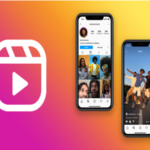The Lifeline Assistance Program is a Federal Communications Commission (FCC) initiative that makes communication services more affordable for low-income consumers. The program offers discounts on monthly telephone service, broadband internet service, and bundled voice-broadband packages.
The program is available in every state, commonwealth, territory, and Tribal lands. Here lifeline assistance program are some of the many benefits of the Lifeline program:
Cost-Effective Communication
The Lifeline Assistance Program provides a monthly discount for telephone and broadband services. The deal is available for one phone or bundle service; per household and can be used on a landline, mobile phone, or broadband device. The value is open to individuals who qualify for the program based on income. The program is fund through the Universal Service Fund, which is paid for by telecommunication providers.
To qualify for the program, consumers must certify their participation in an eligible program. This can include the Supplemental Nutrition Assistance Program, TANF welfare, HEAP, Medicaid, section 8 housing, and other federal programs. Those who cannot verify their enrollment can use the National Verifier; which connects to databases of qualifying programs and automatically checks eligibility.
In 2012, the FCC issue a Lifeline reform order to modernize the program to include broadband and “constrain the program’s growth to reduce the burden on all who lifeline assistance program contribute to the Universal Service Fund.” The order includ provisions to ensure a one-subscriber per household rule, improve processes for verifying consumer eligibility, and increase protections against carriers being reimbursed multiple times for the same consumer.
Many individuals seek support in managing their telecommunications expenses, often turning to programs like the lifeline assistance program, which offers subsidized services to eligible participants, ensuring essential connectivity remains accessible.
Prioritizing outreach and communications would help increase Lifeline’s and the Affordable Connectivity Program’s participation. It would be ideal for carriers to partner with social service agencies and community anchor institutions to provide educational information on these programs.
Access to Emergency Services
The Lifeline Assistance Program can help you afford a home phone or cell (wireless) phone service if you are a low-income household. The program has been around since 1984 and was designe to ensure that low-income families can have the security of knowing that they can call for help if needed, find jobs, and stay connected with loved ones.
Depending on their state, Eligible households can receive a discounted landline or a free wireless telephone service. Each participating phone company must follow specific guidelines when enrolling and servicing Lifeline subscribers.
One of the main ways this is done is by ensuring that only eligible consumers are enrolle in the program. The company must verify that a consumer is eligible by accessing various income databases to do this. The company must also keep records of each qualifying customer to ensure their benefits are current.
The best way to get starte with Lifeline is to contact the provider of your choice. Many providers offer a free smartphone when you sign up for their service; while others only provide a discount on your landline or mobile phone bill. For more information about the different providers, visit their websites. The provider that you choose will be the one that provides your service; so it is lifeline assistance program essential to take the time to research them and find the best option for your needs.
Reduced Stress on Healthcare
Lifeline offers low-income consumers a voice, text, and data services discount. The value can be used to pay for home or wireless service and includes a bill credit and waiver of the federal subscriber line charge for landline customers. For mobile users, Lifeline provides a monthly data allowance and reduced rates. Customers must provide proof of participation in one or more; of the eligible programs to qualify for Lifeline and can submit documentation via mail or online. A telephone will not keep a copy of the documentation provided to verify eligibility.
Studies consistently show that healthcare workers are exposed to high levels of stress and mental ill-health. These conditions can lead to lower job satisfaction, absenteeism, and decreased productivity. Furthermore, such situations can have severe repercussions for patient well-being and safety.
The good news is that evidence shows that stress reduction interventions are effective for healthcare professionals. These include cognitive behavioral therapy, yoga and qigong, mindfulness-based stress reduction, and multimodal combinations of these approaches. Such interventions can reduce stress and improve employee well-being, which helps reduce care costs and improve overall patient outcomes.
Increased Self-Sufficiency
The Lifeline program is one of the best programs for low-income households. It helps them save money on their phone and internet bills and enables them to communicate with family members more often. It allows them to stay in touch with their loved ones even if they lifeline assistance program cannot visit them in person due to health conditions or lack of transportation.
The program has undergone a series of reforms in recent years, first to combat fraud and then to bring the subsidies in line with emerging technologies. In addition to those reforms, the FCC under Wheeler has refocused the program on broadband and established a new National Verifier program to help ensure that only eligible applicants receive the subsidy.
To qualify for Lifeline, consumers must enroll in an eligible government assistance program or meet income guidelines determined by the federal poverty level. Documentation required to prove eligibility can include a signed document certifying participation in a suitable program or documentation that indicates that the household’s income is at or below the established guideline.
While the application process varies by provider, most offer a similar online experience. To streamline the process, it is recommend that individuals pull together all of the require documents and information before starting the application. This can reduce the stress of filling out the online form and increase accuracy.


